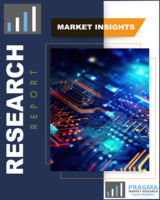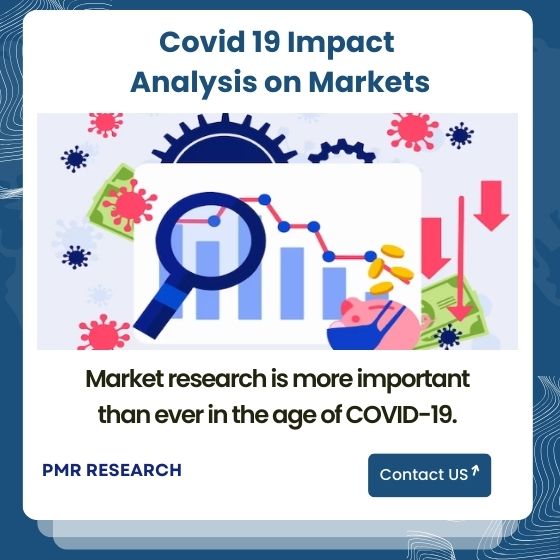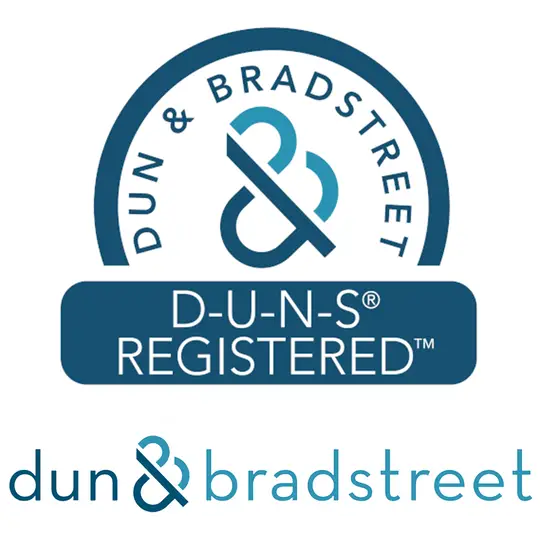
Pharmaceutical Robots Market, By Products (SCARA, Articulated, Traditional, Cartesian, Dual-arm, and Collaborative), By Application (Picking and Packaging, Laboratory Applications and Inspection of Pharmaceutical Drugs) and Geography (NA, EU, APAC, and RoW) ? Analysis, Share, Trends, Size, & Forecast From 2017 ? 2028


Market Executive Summary
REPORT HIGHLIGHT
The pharmaceutical robots market is estimated to represent a global market of USD 147.3 million by 2017 with growth rate of 15.3%.
Market Dynamics
Automation has become an important part of pharmaceutical manufacturing. Automation in packaging and inspections offers benefits such as improve efficiency, reduce training overhead, eliminate human error and increase reproducibility. Pharmaceutical companies are gradually injecting more robotic systems into their operations due to its associated advantages. For instance, use of robotic systems can speed up high throughput screening (HTS) where millions of molecular compounds are tested to determine which could become new drugs. According to the Association for Packaging and Processing Technologies (PMMI), robotic technologies are projected to handle over 35% of pharmaceutical packaging operations in the U.S. by 2018, compared to 20% in 2013.
Therefore, companies are actively investing in robotic systems to automate the operations. For example, recently, in June 2017, Merck expanded its packaging capacity at Swiss biotech manufacturing site of Aubonne. This facility is equipped with fully automated and robotized logistic to support the growth of biotech medicine portfolio. Likewise, in November 2014, Argos Therapeutics partnered with Invetech to develop automated manufacturing systems for personalized immunotherapy. This system is based on Argos? proprietary Arcelis technology platform and uses two & five-axis robotic arms in the production of the mRNA. Such facts are portraying the strong demand for these products in the medical industry. However, lack of expertise and high initial cost will hamper the industry growth to some extent.
Product Takeaway
Product wise, the market is segmented into SCARA, Articulated, Traditional, Cartesian, Dual-arm, and Collaborative Pharmaceutical Robots. Cartesian robots accounted for over 15% share of the global market and are projected to grow with 14.3% CAGR over the study period. Growing demand for Cartesian robots is majorly attributed to its low cost, although its restricted range of motions will limit product usage. On the flip side, collaborative robots will see greater adoption by pharmaceutical manufacturers as they are more capable in tough manufacturing settings.
Application Takeaway
Depending upon applications, the market is classified as Picking and Packaging, Laboratory Applications and Inspection of Pharmaceutical Drugs. The end-use industry is segmented into Research Laboratories and Pharmaceutical Companies. Research laboratories captured 32.1% share of the global market. Some of the work assisted by pharmaceutical robots in research lab includes assay analysis and automatic movement of test tubes.
Key Vendor Takeaway
Companies namely Fanuc Corporation, Kawasaki Heavy Industries Ltd., Kuka AG, ABB Ltd., Yaskawa Electric Corporation, Mitsubishi, Denso Wave Incorporated, and Universal Robots are operating in this industry. Strategic acquisitions have become an important business strategy for key players looking to expand their presence in this market. For instance, in January 2017, Zimmer Biomet, an orthopedic device acquired surgical robotic company named Medtech SA. This acquisition has added Medtech?s FDA approved Rosa surgical robot to the Zimmer?s product portfolio.
The market size and forecast for each segment and sub-segments has been considered as below:
Historical Year ? 2017 ? 2021
Base Year ? 2021
Estimated Year ? 2022
Projected Year ? 2028
TARGET AUDIENCE
Traders, Distributors, and Suppliers
Manufacturers
Government and Regional Agencies and Research Organizations
Consultants
Distributors
SCOPE OF THE REPORT
The scope of this report covers the market by its major segments, which include as follows:
MARKET, BY PRODUCTS
SCARA
Articulated
Traditional
Cartesian
Dual-arm
Collaborative
MARKET, BY APPLICATION
Picking and Packaging
Laboratory Applications
Pharmaceutical Drugs
MARKET, BY REGION
North America
U.S.
Canada
Europe
Germany
France
Rest of Europe
Asia Pacific
India
China
Rest of APAC
Rest of the World
Middle East and Africa
Latin America
Table of Contents
TABLE OF CONTENT 1. PHARMACEUTICAL ROBOTS MARKET OVERVIEW
1.1. Study Scope
1.2. Assumption and Methodology
2. EXECUTIVE SUMMARY
2.1. Key Market Facts
2.2. Geographical Scenario
2.3. Companies in the Market
3. PHARMACEUTICAL ROBOTS KEY MARKET TRENDS
3.1. Market Drivers
3.1.1. Impact Analysis of Market Drivers
3.2. Market Restraints
3.2.1. Impact Analysis of Market Restraints
3.3. Market Opportunities
3.4. Market Future Trends
4. PHARMACEUTICAL ROBOTS INDUSTRY STUDY
4.1. Porter?s Analysis
4.2. Market Attractiveness Analysis
4.3. Regulatory Framework Analysis
5. PHARMACEUTICAL ROBOTS MARKET LANDSCAPE
5.1. Market Share Analysis
6. PHARMACEUTICAL ROBOTS MARKET ? BY PRODUCTS
6.1. Overview
6.2. SCARA
6.2.1. Overview
6.2.2. Market Analysis, Forecast, and Y-O-Y Growth Rate, 2017 ? 2028, (US$ Billion)
6.3. Articulated
6.3.1. Overview
6.3.2. Market Analysis, Forecast, and Y-O-Y Growth Rate, 2017 ? 2028, (US$ Billion)
6.4. Traditional
6.4.1. Overview
6.4.2. Market Analysis, Forecast, and Y-O-Y Growth Rate, 2017 ? 2028, (US$ Billion)
6.5. Cartesian
6.5.1. Overview
6.5.2. Market Analysis, Forecast, and Y-O-Y Growth Rate, 2017 ? 2028, (US$ Billion)
6.6. Dual-arm
6.6.1. Overview
6.6.2. Market Analysis, Forecast, and Y-O-Y Growth Rate, 2017 ? 2028, (US$ Billion)
6.7. Collaborative
6.7.1. Overview
6.7.2. Market Analysis, Forecast, and Y-O-Y Growth Rate, 2017 ? 2028, (US$ Billion)
7. PHARMACEUTICAL ROBOTS MARKET ? BY APPLICATION
7.1. Overview
7.2. Picking and Packaging
7.2.1. Overview
7.2.2. Market Analysis, Forecast, and Y-O-Y Growth Rate, 2017 ? 2028, (US$ Billion)
7.3. Laboratory Applications
7.3.1. Overview
7.3.2. Market Analysis, Forecast, and Y-O-Y Growth Rate, 2017 ? 2028, (US$ Billion)
7.4. Pharmaceutical Drugs
7.4.1. Overview
7.4.2. Market Analysis, Forecast, and Y-O-Y Growth Rate, 2017 ? 2028, (US$ Billion)
8. PHARMACEUTICAL ROBOTS MARKET? BY GEOGRAPHY
8.1. Introduction
8.2. North America
8.2.1. Overview
8.2.2. Market Analysis, Forecast, and Y-O-Y Growth Rate, 2017 ? 2028, (US$ Billion)
8.2.3. U.S.
8.2.3.1. Overview
8.2.3.2. Market Analysis, Forecast, and Y-O-Y Growth Rate, 2017 ? 2028, (US$ Billion)
8.2.4. Canada
8.2.4.1. Overview
8.2.4.2. Market Analysis, Forecast, and Y-O-Y Growth Rate, 2017 ? 2028, (US$ Billion)
8.3. Europe
8.3.1. Overview
8.3.2. Market Analysis, Forecast, and Y-O-Y Growth Rate, 2017 ? 2028, (US$ Billion)
8.3.3. France
8.3.3.1. Overview
8.3.3.2. Market Analysis, Forecast, and Y-O-Y Growth Rate, 2017 ? 2028, (US$ Billion)
8.3.4. Germany
8.3.4.1. Overview
8.3.4.2. Market Analysis, Forecast, and Y-O-Y Growth Rate, 2017 ? 2028, (US$ Billion)
8.3.5. Rest of Europe
8.3.5.1. Overview
8.3.5.2. Market Analysis, Forecast, and Y-O-Y Growth Rate, 2017 ? 2028, (US$ Billion)
8.4. Asia Pacific (APAC)
8.4.1. Overview
8.4.2. Market Analysis, Forecast, and Y-O-Y Growth Rate, 2017 ? 2028, (US$ Billion)
8.4.3. China
8.4.3.1. Overview
8.4.3.2. Market Analysis, Forecast, and Y-O-Y Growth Rate, 2017 ? 2028, (US$ Billion)
8.4.4. India
8.4.4.1. Overview
8.4.4.2. Market Analysis, Forecast, and Y-O-Y Growth Rate, 2017 ? 2028, (US$ Billion)
8.4.5. Rest of APAC
8.4.5.1. Overview
8.4.5.2. Market Analysis, Forecast, and Y-O-Y Growth Rate, 2017 ? 2028, (US$ Billion)
8.5. Rest of the World
8.5.1. Overview
8.5.2. Market Analysis, Forecast, and Y-O-Y Growth Rate, 2017 ? 2028, (US$ Billion)
8.5.3. Latin America
8.5.3.1. Overview
8.5.3.2. Market Analysis, Forecast, and Y-O-Y Growth Rate, 2017 ? 2028, (US$ Billion)
8.5.4. Middle East and Africa
8.5.4.1. Overview
8.5.4.2. Market Analysis, Forecast, and Y-O-Y Growth Rate, 2017 ? 2028, (US$ Billion)
9. KEY VENDOR ANALYSIS
9.1. Kawasaki Heavy Industries Ltd.
9.1.1. Company Overview
9.1.2. SWOT Analysis
9.1.3. Key Developments
9.2. Fanuc Corporation
9.2.1. Company Overview
9.2.2. SWOT Analysis
9.2.3. Key Developments
9.3. ABB Ltd.
9.3.1. Company Overview
9.3.2. SWOT Analysis
9.3.3. Key Developments
9.4. Kuka AG
9.4.1. Company Overview
9.4.2. SWOT Analysis
9.4.3. Key Developments
9.5. Mitsubishi
9.5.1. Company Overview
9.5.2. SWOT Analysis
9.5.3. Key Developments
9.6. Yaskawa Electric Corporation
9.6.1. Company Overview
9.6.2. SWOT Analysis
9.6.3. Key Developments
9.7. Denso Wave Incorporated
9.7.1. Company Overview
9.7.2. SWOT Analysis
9.7.3. Key Developments
9.8. Universal Robots
9.8.1. Company Overview
9.8.2. SWOT Analysis
9.8.3. Key Developments
*Client can request additional company profiling as per specific requirements
10. 360 DEGREE ANALYSTVIEW
11. APPENDIX
11.1. Research Methodology
11.2. Abbreviations
11.3. Disclaimer
11.4. Contact Us
List of Figures
List of Figures
Figure 1 Research Methodology
Figure 2 Research Process Flow Chart
Figure 3 Comparative Analysis, by Geography, 2017-2028 (Value %)
Figure 4 Regulatory Framework Analysis
Figure 5 Pharmaceutical Robots Market, by Products, 2017 ? 2028 (USD Billion)
Figure 6 Pharmaceutical Robots Market, by Application, 2017 ? 2028 (USD Billion)
Figure 7 Pharmaceutical Robots Market, by Geography, 2017 ? 2028 (USD Billion)

This report focuses on:
► Intelligent insights to take informed business decisions.
► Qualitative and quantitative analysis of the market.
► Market size and forecasts from 2024 to 2030.
► Opportunities for expansion and in-depth market analysis.
► Segmentation and regional revenue forecasts.
► Analysis of the market share and competitive landscape.
► Strategic recommendations for future growth.
You'll also receive:
► A comprehensive market research report in PDF or PPT formats.
► Access to our analysts to learn more about the report and get answers to your specific business questions.
► The option to customize the report to meet your specific needs, such as adding more countries or regions or developing abusiness case to launch a new product.


